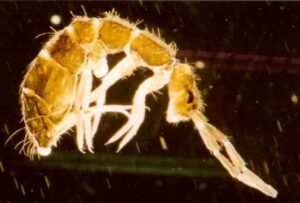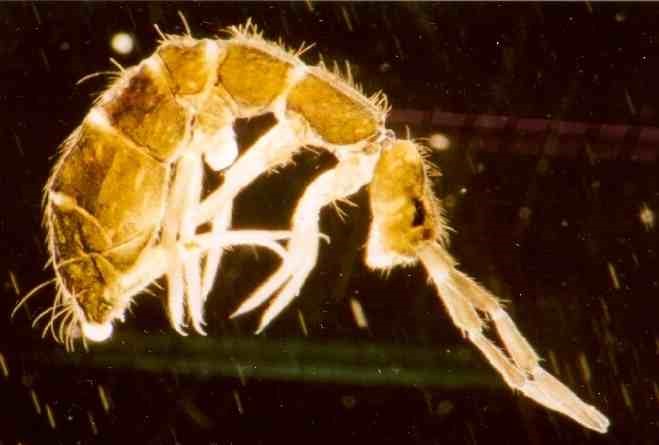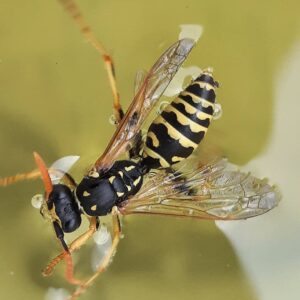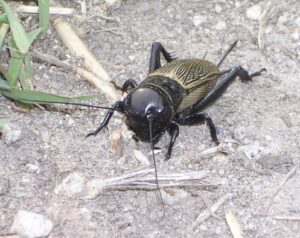Springtails or Snow Fleas:
Common Springtail
General Description
| · Springtails (Collembola) are very small, primitive, elongated, 1 to 10 mm in length, and have moderate- length antennae. Springtails and fleas may be of the same size, but have differences in their structure.
· They are dark-colored, brown, grey or, black. Some species may be white and some are even brightly colored. |

Credit: U. Burkhardt |
- Springtails do not have wings and cannot fly. But they can jump up to several centimeters using a special forked structure under the abdomen.
- They have a forked appendage (furcula) attached at the end of the abdomen and held in place under a clasp-like structure formed by a pair of appendages. The furcula provides a jumping apparatus for the collembolan.
- Springtails also have a ventral abdominal, suckerlike tube (collaphore), which secretes a sticky, adhesive substance and also takes up water.
Life Cycle and Common Characteristics
- The young hatch from spherical eggs and closely resemble the adult.
- There can be 3 to 12 molts before maturity and up to about 50 molts during the lifetime of a springtail.
- In areas with sufficient vegetation, around air conditioning condensate lines, Springtails are very common. They tend to grow faster in soil, algae, decaying plant matter, and bacteria and are predators of small soil animals and a few tender plants.
- Collembolans are omnivorous, free-living organisms that prefer moist conditions. They do not directly engage in the decomposition of organic matter but contribute to it indirectly through the fragmentation of organic matter and the control of soil microbial communities.
- Springtails live in soil and on water and feed on fungal hyphae and spores, decaying vegetable matter, logs, plant materials and pollen, animal remains, colloidal materials, mushrooms, minerals, and bacteria.
- Springtails are found indoors and outdoors. Outdoors, are found feeding on fungi, pollen, algae or decaying organic matter. When they are close to the home, they may move indoors. Indoors, they are in areas of high moisture and condensation (around plumbing leaks in bathrooms, basements and kitchens). They are also found in the soil of overwatered houseplants.
Damages and Economic & Medical Implications
- Springtails do not cause structural damage and virtually pose no serious threat to the house owner. They tend to feed on fungi and decaying matter.
- They cause severe damage to agricultural crops.




